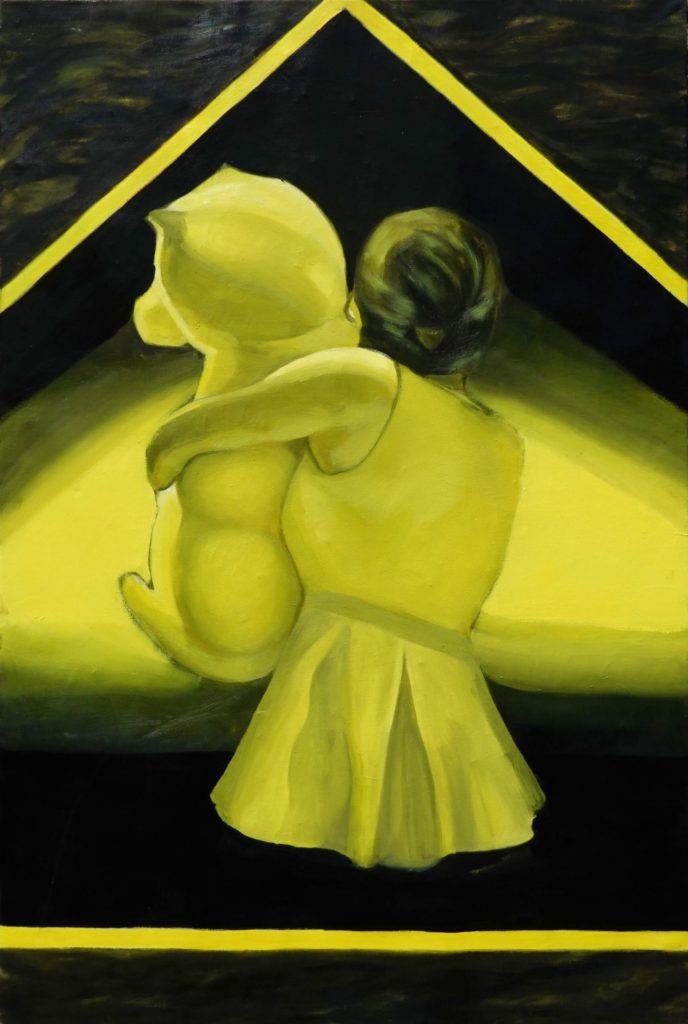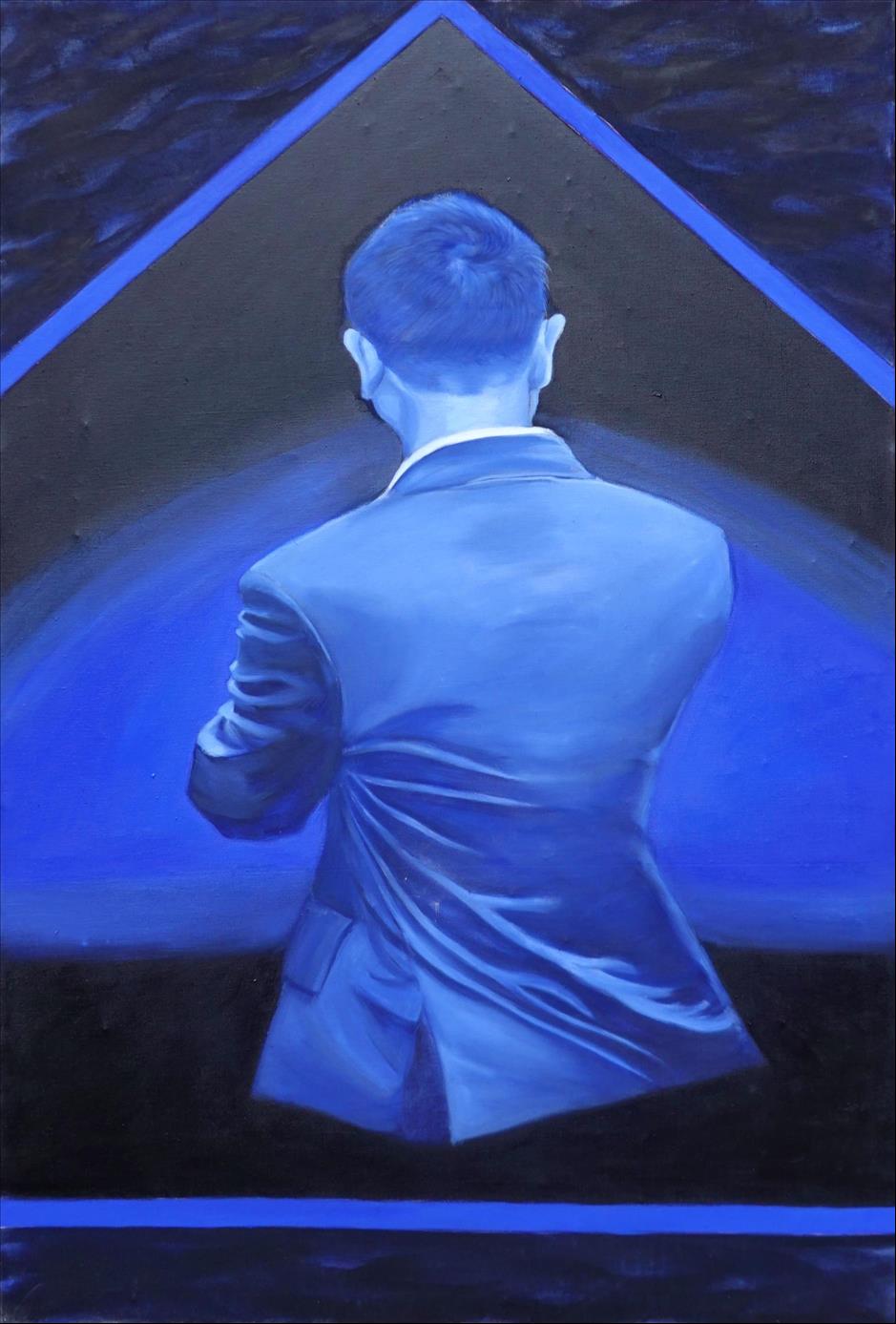
In The Liminality Of Waiting: The Symbolic Space And Memory Deconstruction Of Xinan Yang
Xinan Yang, a Chinese artist residing in London, holds a Doctorate in Fine Arts from the University of East London. Her research and artistic practice explore the intricacies of familial dynamics, diasporic identities, and the visual reinvention of collective memory. Exhibitions at renowned venues such as Lauderdale House and Saatchi Gallery have firmly established her identity as a“creator of visual psychological theater.” In contrast to one-dimensional representations of homecoming, her works do not simply pose the question,“Where do we come from?” Instead, they interrogate, with subtle profundity,“How do we perceive ourselves within the rupture?”
Within her canvases, Xinan Yang consistently explores the postures of those caught between waiting and returning. These figures do not move; they are frozen, poised in gestures that are charged with tension. This suspension of motion constructs an eternal standoff, embedded within the very fabric of the image. A mother cradles a small dog, her back turned, gazing beneath the soft glow of a luminous triangle; a father stands in his black suit, his back to the viewer, positioned at the threshold of the home-an“alien” presence within the domestic space. This figure evokes the“stranger” described by Georg Simmel-existing within the familial structure, yet maintaining a deliberate distance, an outsider by design.

Within her canvases, Xinan Yang consistently explores the postures of those caught between waiting and returning. These figures do not move; they are frozen, poised in gestures that are charged with tension. This suspension of motion constructs an eternal standoff, embedded within the very fabric of the image. A mother cradles a small dog, her back turned, gazing beneath the soft glow of a luminous triangle; a father stands in his black suit, his back to the viewer, positioned at the threshold of the home-an“alien” presence within the domestic space. This figure evokes the“stranger” described by Georg Simmel-existing within the familial structure, yet maintaining a deliberate distance, an outsider by design.
“He is my paradox,” Xinan Yang remarked in an interview.“Serious, reticent, always steady, yet forever distant; always far away, but nonetheless the very foundation of home”.
This contradiction is not resolved within her art; instead, it is“frozen” and“fixed,” transforming into a mode of observation-a choreography for the absent, a dance of absence itself.

Such recurring motifs are embedded throughout her imagery: the cradled dog, the animal's backward glance, the levitating figure, the misaligned furniture, doors suspended in mid-air. These elements, initially appearing tangible, gradually slip into the realm of the symbolic.“Yellow” emanates a“lingering warmth,” while“blue” retreats into the serene embrace of“calm absence.” The pink gaze does more than signal a shift in the position of the animal; it subtly inverts the very position of the observer.
In Olga Tokarczuk's concept of“Time Weaving,” memory is envisioned as a process of recurrent knotting and reencountering. In Xinan's work, the canvas becomes a loom, and the imagery itself, the thread. Time, no longer linear, coils and twists within the spatial fabric of her paintings. She transfigures time into space, transforming the sense of belonging into a“standing structure,” while the boundaries of emotion manifest as furniture, door frames, or even suspended geometric forms.
Regarding compositional structure, her work departs from the trajectories of artists such as Magritte or Chagall. She does not weave dreams through visual illusions, but instead creates psychological echoes through the hushed spaces of magical realism. Drawing closer to Giorgio de Chirico's“metaphysical landscapes,” every tangible element is imbued with profound significance through its deliberate placement within the composition.
Xinan Yang's paintings shun the easy temptations of sentimentality or narrative. She does not seek to unravel a complete story; rather, she arranges images that demand the viewer to pause, to stand still, to confront their own emptiness. This restraint, coupled with the structural dissonance of her works, grants them an extraordinary depth and a quietly subversive power.
In an age inundated with hyperactive imagery, Xinan Yang's embrace of stillness, waiting, and confrontation becomes an act of resistance against the prevailing logic of consumption. It carries within it a subtle declaration:“Art is not the reproduction of memory, but the creation of memory.” What she constructs is not merely a personal theatre, but a universal language of symbols-capable of resonating across time and space, becoming a force within the future of art-a note rich with the potential for evolution and direction.
Written by:Ash Birch

Legal Disclaimer:
MENAFN provides the
information “as is” without warranty of any kind. We do not accept
any responsibility or liability for the accuracy, content, images,
videos, licenses, completeness, legality, or reliability of the information
contained in this article. If you have any complaints or copyright
issues related to this article, kindly contact the provider above.


















Comments
No comment